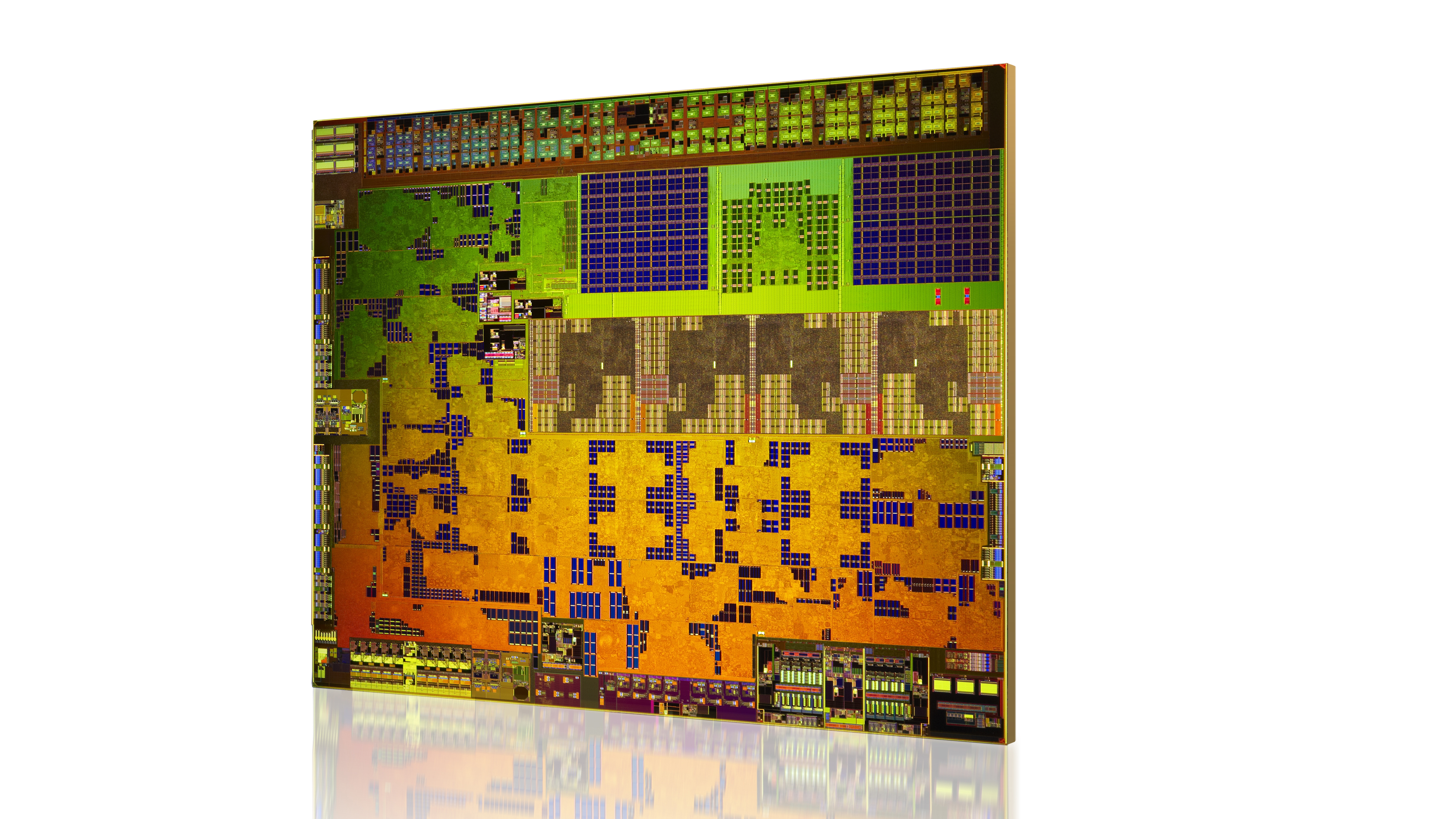TechRadar Verdict
Pros
- +
Revised cores are an improvement
- +
Good battery life
- +
AMD's latest graphics technology
- +
Good 2H HD video performance
- +
Your laptop is almost a PS4
Cons
- -
CPU performance firmly in ultramobile territory
- -
Not enough graphics cores for proper gaming
- -
Doesn't dramatically move the APU game on
- -
Has us worrying about next-gen CPU performance
Why you can trust TechRadar
The last five years or so for AMD CPUs have been sub-spectacular to say the least. But things are looking up and one of the good news stories very much revolves around the new AMD A4-5000 APU, codenamed Kabini.
More precisely, it's the new Jaguar cores inside this APU that are making waves. That's because they're found in both Microsoft's new Xbox One console and the PlayStation 4 from Sony. Yup, AMD's Jaguar architecture is a very big deal.
So what exactly is it? Our first taste of Jaguar comes in the form of the quad-core AMD A4-5000 APU. It's fitted to what's known as a whitebook laptop. That's basically a non-branded system that exists primarily for the likes of us to assess the new chip and its associated platform (chipset etc) and tell you all about it. So, you can't buy this laptop off the shelf.
As for the A4-5000, it's a variant of what's known as the Kabini APU or Accelerated Processing unit. Thus it has four Jaguar cores and an AMD Radeon HD 8330 integrated graphics core.
The main thing to appreciate about this chip - and one of the things that makes for an intriguing thought in the context of those new games consoles - is that it's very much a mobile processor. In fact, it's pretty much an ultra-mobile processor.
Those Jaguar cores are a replacement for AMD's earlier Bobcat cores and that makes them more a competitor for Intel's ultra-mobile Atom processors than any full-power desktop or laptop CPU. The main difference with Jaguar and thus Kabini being that it's not designed to squeeze into devices as small as smartphones, as the latest low-power Atoms are.
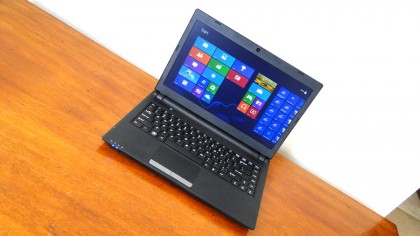
Instead, super thin-and-light laptops and tablets are essentially the limit for Kabini. That's fine by us. There are plenty of alternatives in the smartphone CPU market. What we want from AMD is something to keep Intel honest in its core market and also provide an alternative in the burgeoning market for tablet PCs running the x86 version of Windows 8, including Microsoft's Surface Pro.
It would also be nice if Kabini could help provide a cut price alternative to Intel's sexy but pricey Ultrabooks - you know, systems like the Asus Zenbook Prime UX31A or Acer Aspire S7. And that's exactly what it promises. Time to find out more.
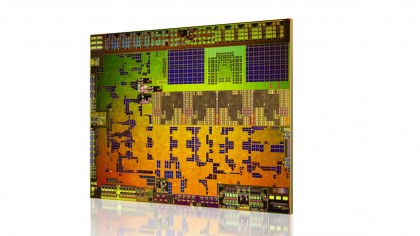
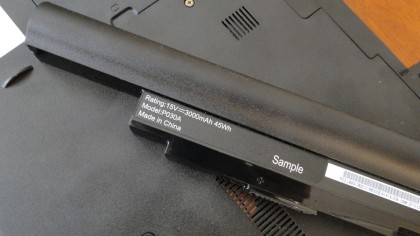
Let's get the specs of AMD's reference whitebook sorted and then we can concentrate on that fascinating AMD A4-5000 APU, eh?
It's a thin-an'-slim 13-inch laptop with a 1080p display. Storage-wise, we're talking 320GB of old school magnetic hard drive sadly, so we'll do our best to exclude that from our performance assessments. This chip really wants an SSD.
There's 4GB of RAM, 512MB of it reserved for the A4-5000's integrated graphics, more on which in a moment. As for the battery pack, it's a 3,000mAh unit.
And so to the A4-5000 itself. The fun starts with four AMD Jaguar cores running at 1.5GHz. Jaguar is the follow up to AMD's Bobcat low-power CPU architecture. It's in roughly the same ballpark as Intel's Atom CPU core, but isn't intended for smartphones. The limit in terms of mobile devices is tablets and super slim laptops.
Anywho, AMD has targetted a range of improvements with the transition from Bobcat to Jaguar. Highlights include increased IPC or instructions per clock, increased frequency at any given voltage and more finely grained power management.
As for the graphics part of the equation, AMD is calling the A4-5000's 3D core the AMD Radeon HD 8330. It runs at 496MHz and sports AMD's latest GCN graphics architecture. All told, it packs 128 of AMD's latest graphics shaders.
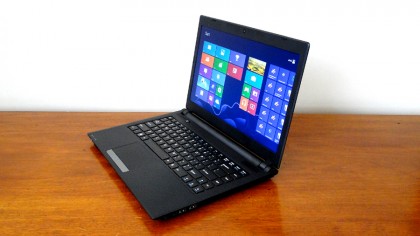
At this stage, two pressing comparisons hove into view. Firstly, we have the next-gen consoles from Microsoft and Sony, both of which sport precisely the same CPU core and graphics arhcitecture. Then there's Brazos, AMD's Bobcat-based APU and the A4-5000's progenitor.
Intriguingly, both the Xbox One and the PS4 have Jaguar cores running at 1.6GHz, so pretty much the same speed as the AMD A4-5000. Of course, they have twice as many cores, but there's a good chance some of those console cores may be reserved for non-gaming functionality. So in gaming terms, this chip might be almost level pegging with the latest consoles. Quite a thought.
Things aren't nearly as evenly matched on the graphics side where the PS4 has 1,152 graphics shaders, the Xbox One is thought to have 768 shaders and the A4-5000 has just 128 shaders.
As for the match up with Brazos, well, you get double the number of CPU cores and around a 50 per cent up tick in graphics cores plus an upgrade from AMD's older VLIW graphics architecture to the latest GCN graphics spec.
Cinebench 11: 1.45pts
Battery Eater 05: 235 minutes
3D Mark Ice Storm: 23,718
3D Mark Cloud Gate: 2,226
3D Mark Fire Strike: 231
Much of the subjective experience with this new AMD A4-5000 APU was spoiled by the use of a super sluggish magnetic hard drive in the test whitebook laptop provided by AMD. That's a pity, because it makes it very hard to get a proper feel for what it has to offer as a full-on Windows 8 chip.
But it's not a complete write off. Once applications and benchmarks have loaded, disk performance becomes much less of an issue, so what have we discovered?
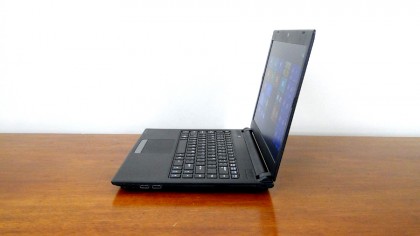
Cinebench 11 is a good starting point. A score of 1.45pts is not hugely impressive. That makes the A4-5000 less than half as grunt as a quad-core AMD FX CPU. As for the match up with something like a quad-core Intel Core i7 chip, it's gruesome. The i7 is about six times faster.
It's not an even remotely fair comparison, we grant you, but it puts the A4-5000 in context. A fairer contest is with Intel's Atom. The Intel Atom D2700 dual core model typically scores around 0.75pts, so the AMD A4-5000 has it pretty much licked.
In the graphics department, well, there's really only so much you can do with 128 AMD GCN shaders. Remember, AMD's hottest desktop graphics chip, as found in the AMD Radeon 7970 board, packs 2,048 shaders clocked roughly twice as fast, which works out to a raw performance advantage of 32 times. Yikes.
For the most part, our testing reflects that modest graphics firepower. The more demanding passages in 3DMark are a genuine slide show, with frames taking multiple seconds to update.
This is not a true gaming chip. However, it does have just enough grunt for casual 3D gaming, especially with older titles. Just Don't expect to fire up Crysis 3 and experience free-flowing and fluid fragging. It ain't gonna happen.
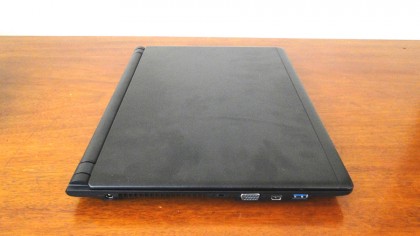
More of an unambiguous upside is the A4-5000's battery life. We have to be careful to draw too many conclusions as this is not a retail notebook. But in the context of the modest 3,000mAh battery pack, the AMD A4-5000 looks like it should make for some impressively long lasting systems.
HD video playback is another strong point. CPU decoding of really high bitrate 1080p flash video is executed smoothly, albeit with the CPU cores dangerously close to maximum load. Normal bitrate 1080p video has the cores loaded to about 60 per cent, leaving a healthy amount of headroom.
AMD's new A4-5000 is an intriguingly little chip in its own right. But the knowledge that it shares much of its architecture with the Microsoft Xbox One and Sony Playstation 4 really ramps up the intrigue. So what have we learned?
We liked
2D HD video playback is strong. That's a critical metric for a modern mobile chip and arguably more important than gaming, even if the latter is what marketing suits prefer to talk about.
We're encouraged by the A4-5000's battery performance too. Whitebook's such as these are rarely the last work in finely honed power management, so our good experience with this laptop will likely only get even better with final retail systems based on AMD's new APU.
We disliked
Perhaps unsurprisingly, AMD hasn't worked miracles with the new Jaguar CPU core design. Clocked here at 1.5GHz, you're looking at cores with less than one fifth the performance of the best current desktop CPU cores.
For the A4-5000 itself, that's not a major issue. It's not a full-one desktop chip and with four cores, it makes up for modest single-threaded throughput with a decent amount of multi-threading. But make no mistake, this is a low-power processor architecture. It's a long way off the pace of AMD's own full-power laptop processors, much less Intel's.
More generally, the fact that AMD specified this test whitebook with a 5,200rpm magnetic drive rather than a solid state drive obscured the APU's ability as a proper Windows 8 chip. Put another way, we're not completely sure how responsive it will feel configured with an SSD. Our guess is that it will make for a pretty nice Windows 8 chip. It's just a shame AMD didn't see fit to show it in its best light.
The graphics performance of the A4-5000 is similarly non-whelming. Based on AMD's successful and familiar GCN architecture, the limitations are down to the number of functional units AMD has squeezed in.
By today's standards, 128 graphics shaders is a modest count in a gaming context and there's no getting round that.
Final verdict
Despite those limitations, we're generally upbeat about the prospects of the AMD A4-5000 as a laptop and tablet processor. Battery life looks good, 2D video is strong and the CPU cores are likely just good enough.
What this chip reveals about the new games consoles, which share much of its technology, is much more worrying.
Put simply, games developers will desperately need to get to grips with multi-threading if they're to have any hope of getting good performance out of these new Jaguar cores. And even with threading fully optimised, we guestimate based on this chip that the PS4 and Xbox will have roughly half the CPU performance of a good Intel desktop processor. And that's assuming all cores are available to a given application or game. Yikes.
Technology and cars. Increasingly the twain shall meet. Which is handy, because Jeremy (Twitter) is addicted to both. Long-time tech journalist, former editor of iCar magazine and incumbent car guru for T3 magazine, Jeremy reckons in-car technology is about to go thermonuclear. No, not exploding cars. That would be silly. And dangerous. But rather an explosive period of unprecedented innovation. Enjoy the ride.
